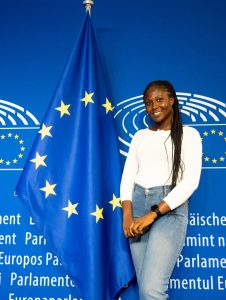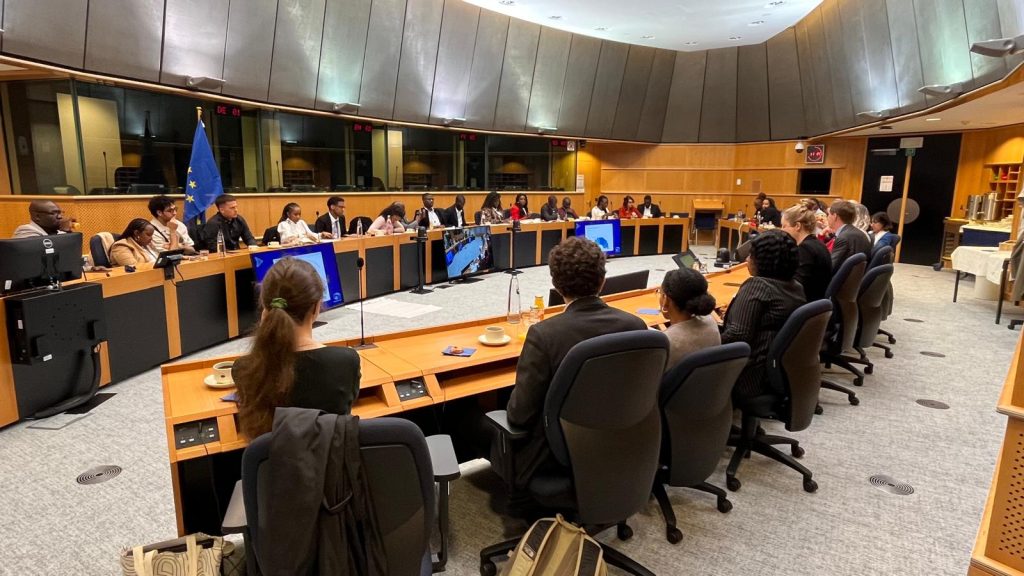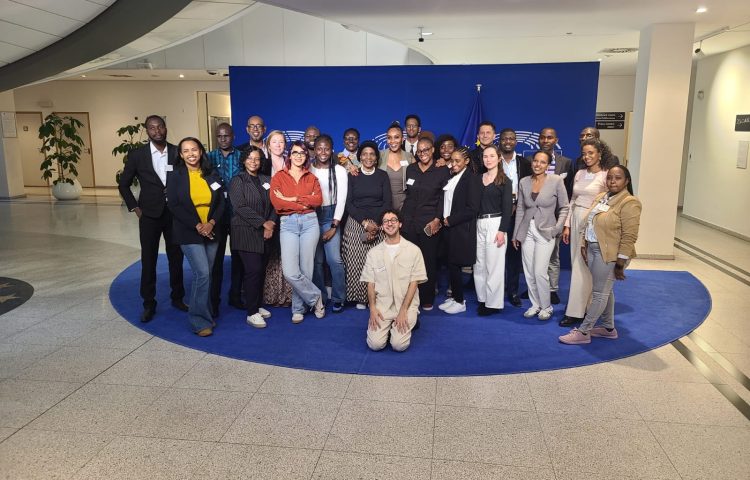As I walked the historic halls of the European Commission in Brussels, the weight of history and the promise of progress felt palpable. Here I was, an African Union media fellow from Nigeria, immersing myself in the complexities and triumphs of European political dynamics. This unique vantage point offered not just a peek into the heart of EU politics but also a lens through which to scrutinize and reflect upon gender parity in electioneering—both within Europe and back home in Africa.
Gender has always been at the heart of my work, so from the moment I touched down during the election weekend, I was eager to explore the gender dynamics in the European elections and compare them to those in motherland Africa. I wanted to understand the differences, if any, and the journey Europe has taken to get there. And so from vibrant discussions in the halls of the European Union Commission to interactions at the parliament and with EEAS spokespersons, my week-long visit to the European Union headquarters in Brussels will stay with me for a long time.

The European Union (EU), composed of 27 member states offers a unique laboratory for studying many things, including the single market, border-free travel, the euro, and notably, gender parity for Africa’s 55 member states. Though the journey of what is now known today as the European Union has been long and arduous, it has resulted in significant milestones, economic integration, and fair political representation.
In the founding treaties of the EU, gender equality took centre stage where the principle of “equal pay for equal work,” was ratified by all member states. In comparison, the African Union’s journey toward gender parity saw a significant milestone with the Maputo Protocol, which came into force in 2005, forty-two years after the African Union was established. As of June 2023, 49 of the 55 AU Member States have signed the protocol, while 44 have ratified it.
However, the representation of women in parliaments across Africa remains alarmingly low. Take Ghana, for instance. Despite having 40 women in its current Parliament—the highest in the country’s history—they constitute only 14.6% of all MPs. This figure places Ghana not just below the global average for women’s representation but also behind the regional averages for West and Sub-Saharan Africa.
While Agenda 2063 envisions a non-sexist Africa where girls and boys can reach their full potential and men and women contribute equally to society, the reality in political representation tells a different story. In Nigeria, where I’m from, since the transition to electoral democracy in 1999, only 157 women have been elected to the National Assembly—38 senators and 119 members of the House of Representatives. This starkly contrasts with the 2,657 men elected during the same period, which includes 616 senators and 2,041 representatives.
Even with the ratification of the Maputo Protocol, countries like Nigeria—with only 3.8% female representation in its upper and lower chambers—and others such as Algeria (6.2%), Benin (7.4%), The Gambia (8.6%), and Liberia (11%) rank among the worst in terms of female representation. These small numbers of women are expected to represent half of the population, half of registered voters and half of the labour force in these countries.
What Did Europe Do differently?
While legal recognition of women’s rights as autonomous individuals didn’t come until the 20th century, many EU member states have made significant strides by introducing quotas to achieve gender parity. Take France and Belgium, for instance, where the law mandates equal numbers of male and female candidates on electoral lists. However, despite such measures, true gender equality has been superficial, even in so-called ‘developed’ nations. In the UK, women still make up only one-third of MPs in the House of Commons, and in the US, they represent just 29.2% of the House of Representatives.
As of January 2024, in the European Union, only five women held the post of prime minister. Among these countries, just ten of the twenty-seven had women ministers of justice, seven had women ministers of foreign affairs, six had women ministers of the interior, and only five had women ministers of the economy and finance. Whereas countries like Finland have made significant progress with 80% of the key ministries being held by women, others like Hungary have no women in government.

The past five years have seen a surge in female leadership at the highest levels of government. In the United States, both chambers of Congress were led by women for the first time: Kamala Harris, the first female Vice President, also holds the title of President of the Senate, and Nancy Pelosi continued her historic tenure as Speaker of the House. In the European Commission, Ursula von der Leyen shattered a glass ceiling by becoming the first female president of the Commission, and her strong performance positions her well for a potential second term.
Turning to Africa, Rwanda stands out as a global leader in female political representation. Holding the world’s highest percentage, women occupy over 61% of seats in its lower house (Chamber of Deputies) and 37.4% in the Senate. However, Rwanda’s remarkable achievement remains an outlier. Globally, the current pace of progress means achieving gender equality in top government positions could take a staggering 130 years – far beyond our lifetimes.
While dismantling deeply entrenched male-dominated cultures and informal systems of privilege is an ongoing challenge, African countries can look to Europe for inspiration. Several European Union member states have implemented binding gender quotas for elections to the European Parliament. These quotas range from parity (50% each for men and women) in Belgium, France, Italy, and Luxembourg, to quotas of at least 40% for each gender in Greece, Spain, Croatia, Portugal, and Slovenia, with Poland setting a minimum of 35% for each.
Coming from Nigeria, I’ve seen firsthand the challenges women face in politics. Limited access to campaign funding and the gatekeeping power of male-dominated parties create a steep climb. This persists despite a national gender policy aiming for 35% affirmative action invariably calling for systemic change.
The EU’s approach, though not perfect, provides valuable lessons on the importance of quotas, cultural shifts, and persistent advocacy. As an AU media fellow, witnessing these dynamics firsthand has enriched my understanding of the global fight for gender parity. It is clear that while significant progress has been made, much work remains to be done.
These lessons will resonate deeply as I continue to leverage storytelling to champion gender equality in Nigeria and across Africa. Implementing effective policies, mandating an inclusive political culture, and ensuring that women have not just a presence but a voice in the highest echelons of power are crucial steps toward a more equitable future in political representation.
It remains to be seen whether 2024, which is an election year for half of the world’s population, will see an increase in women’s representation worldwide.
Adesewa Olofinko is a media fellow of the African Union.

